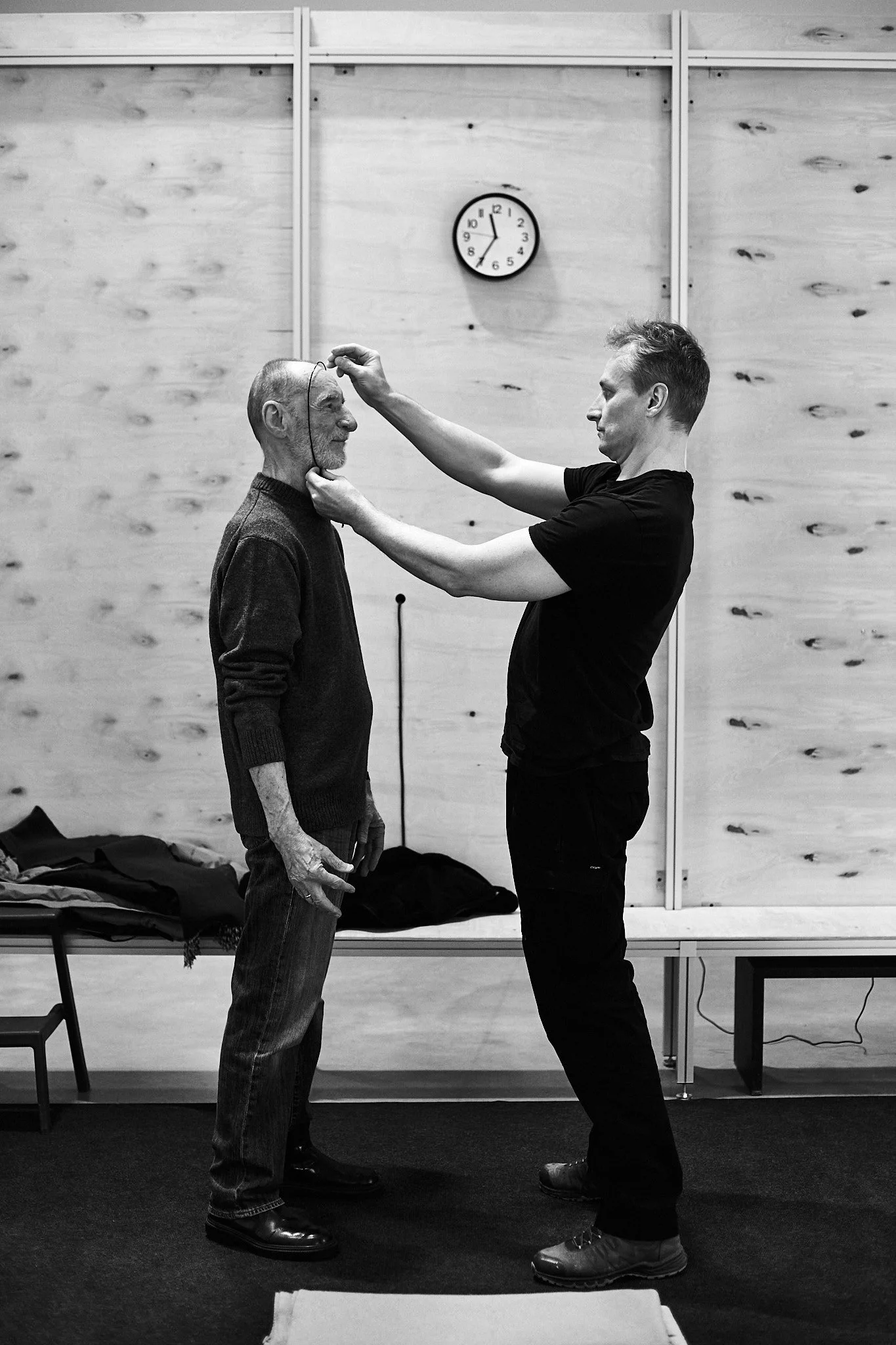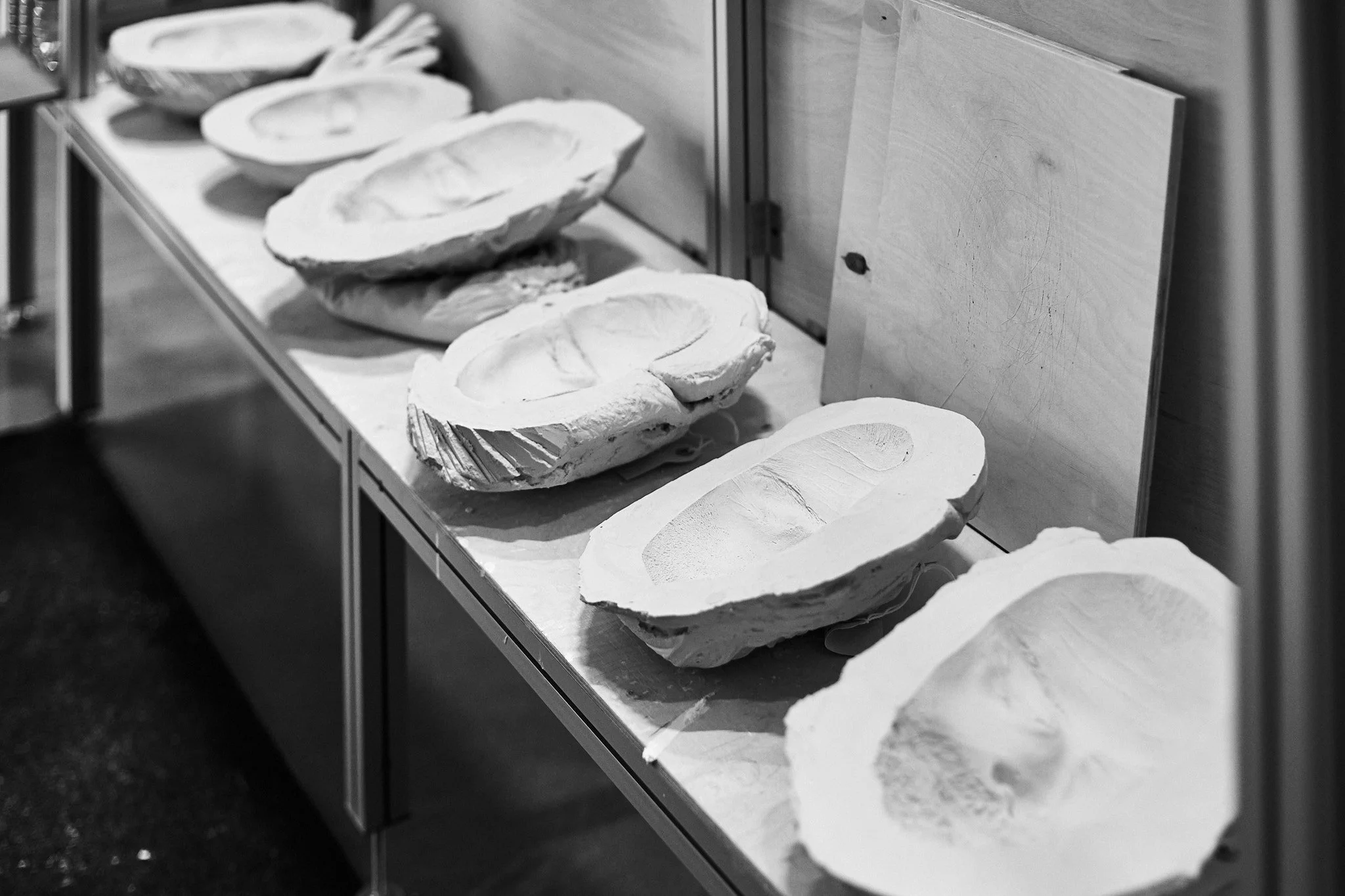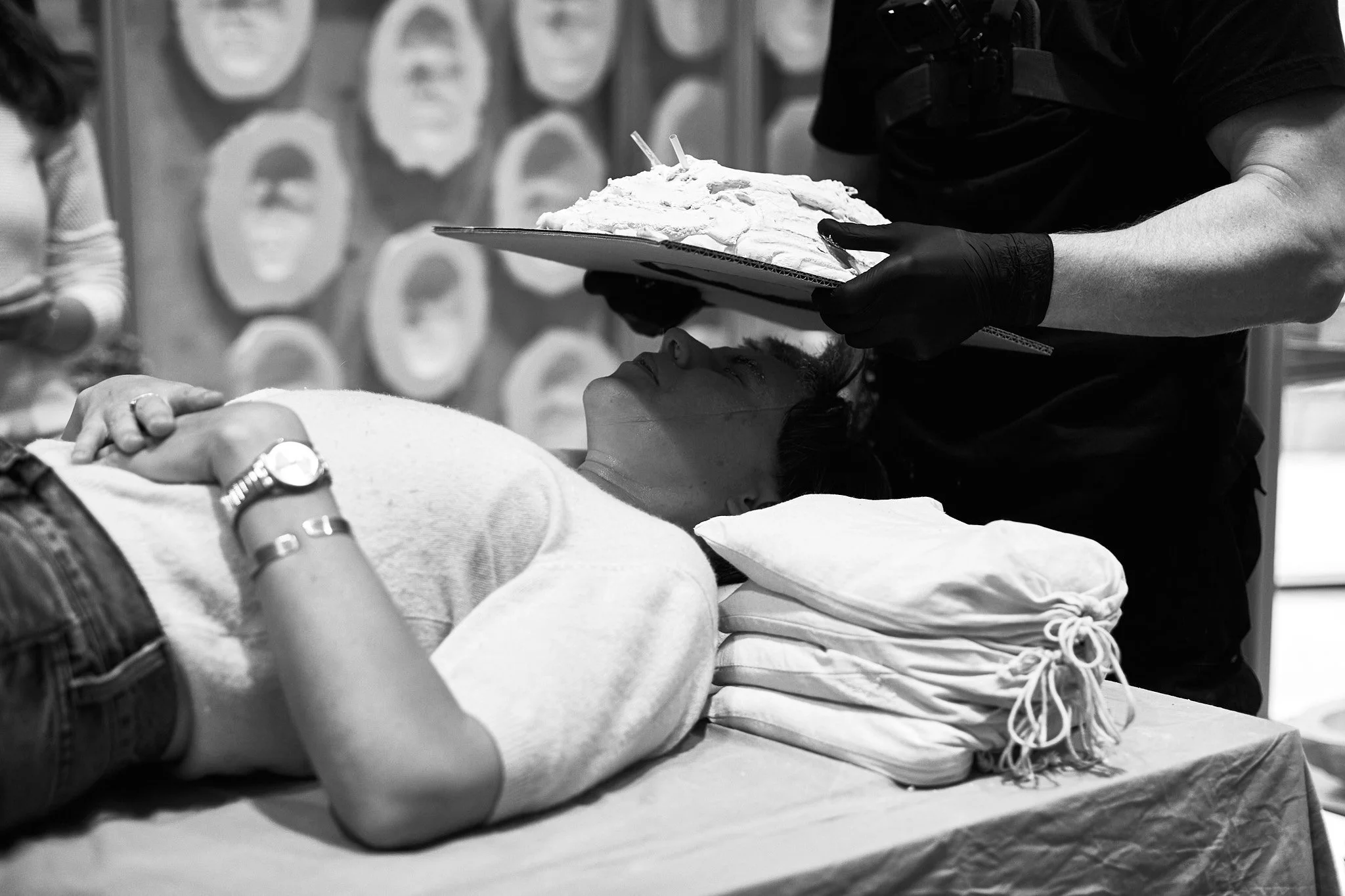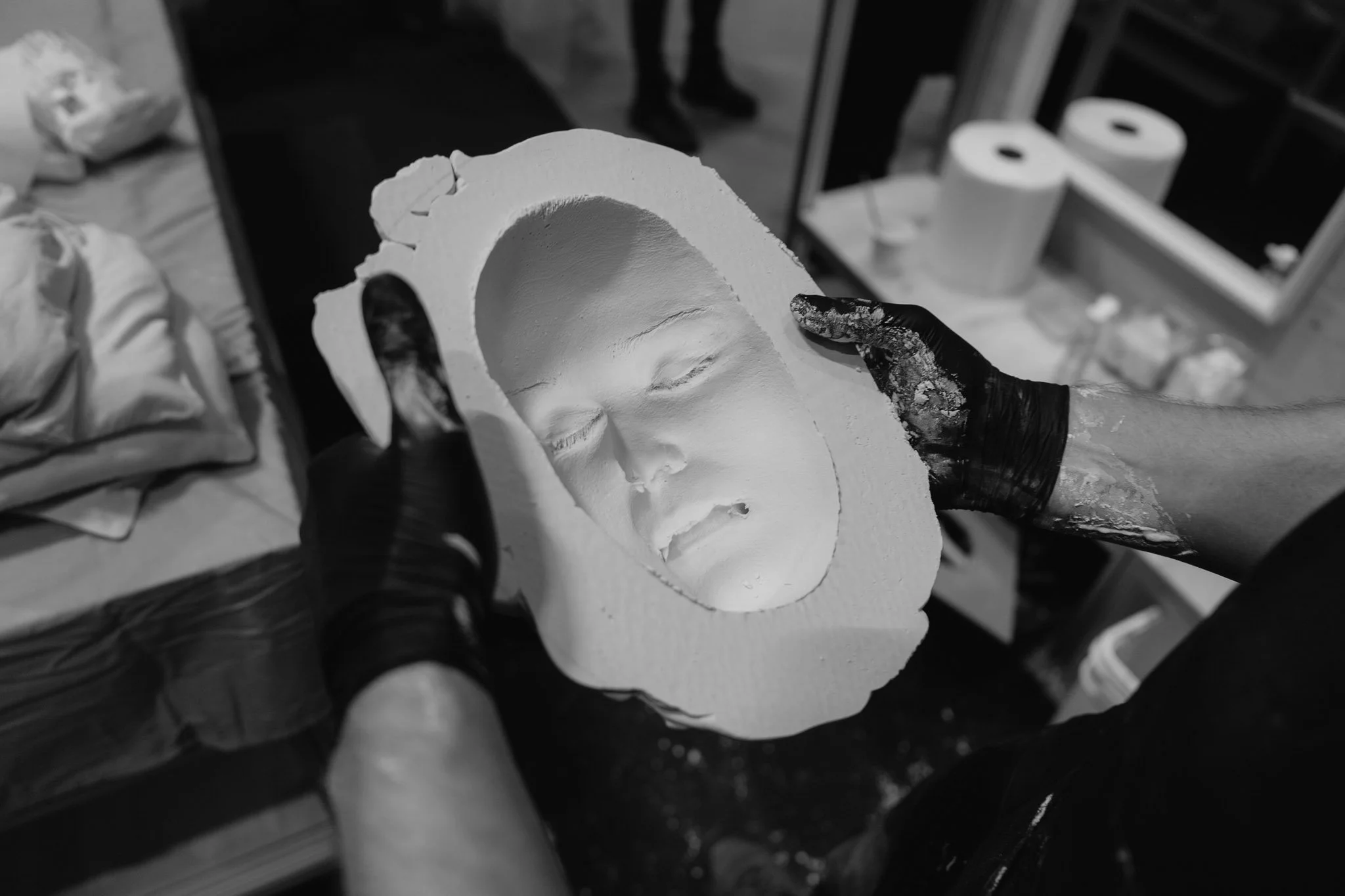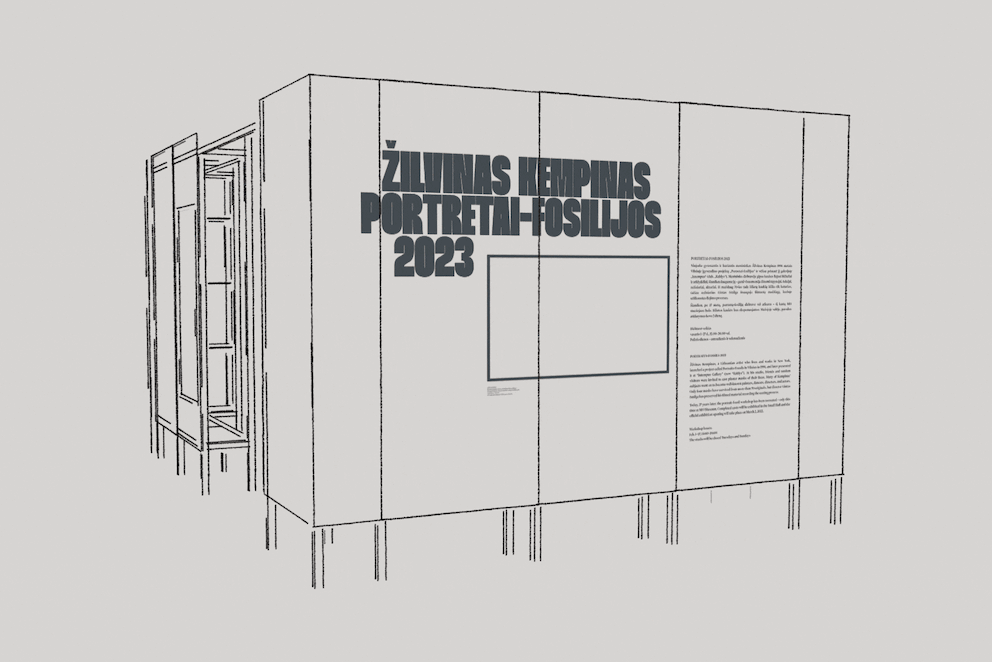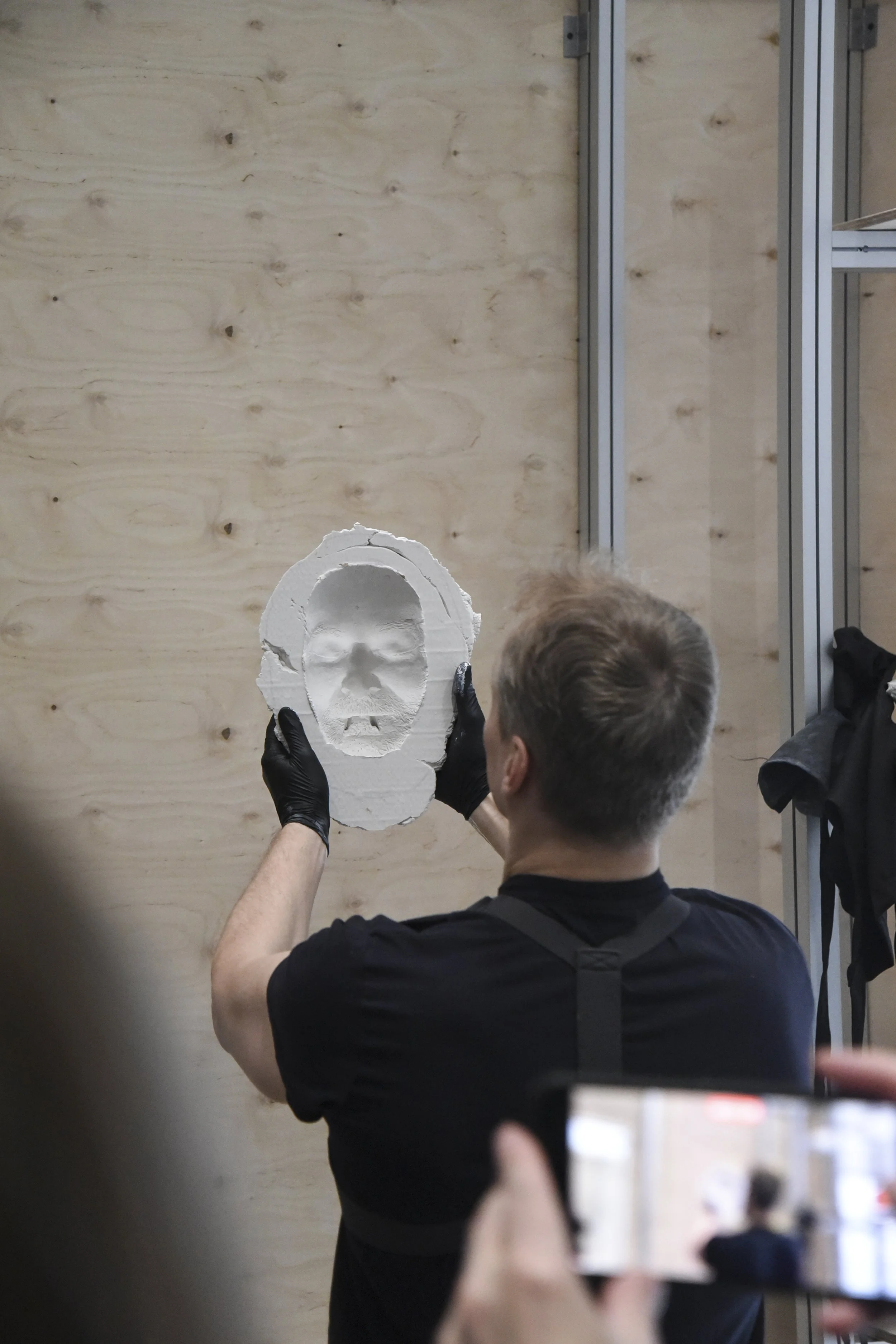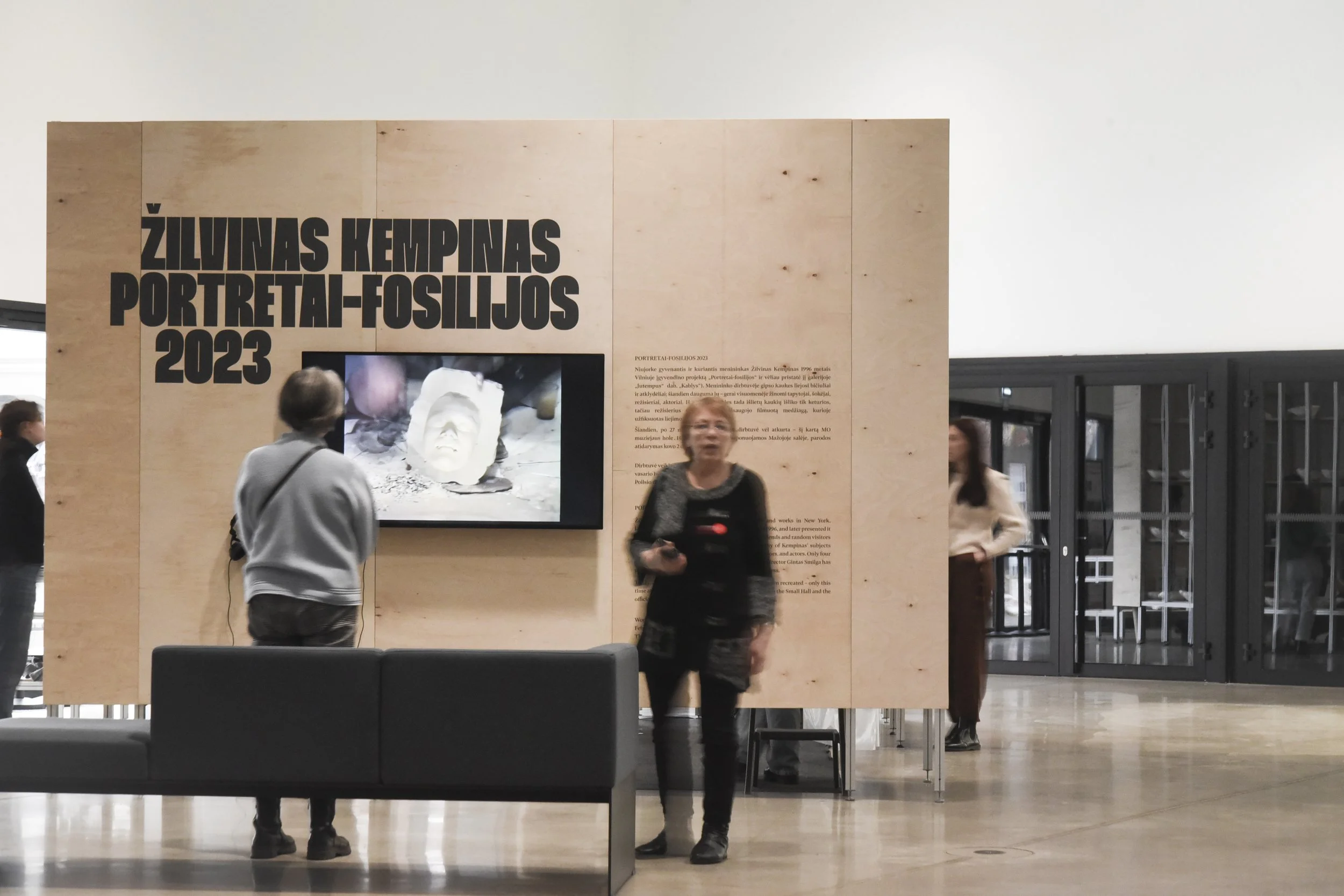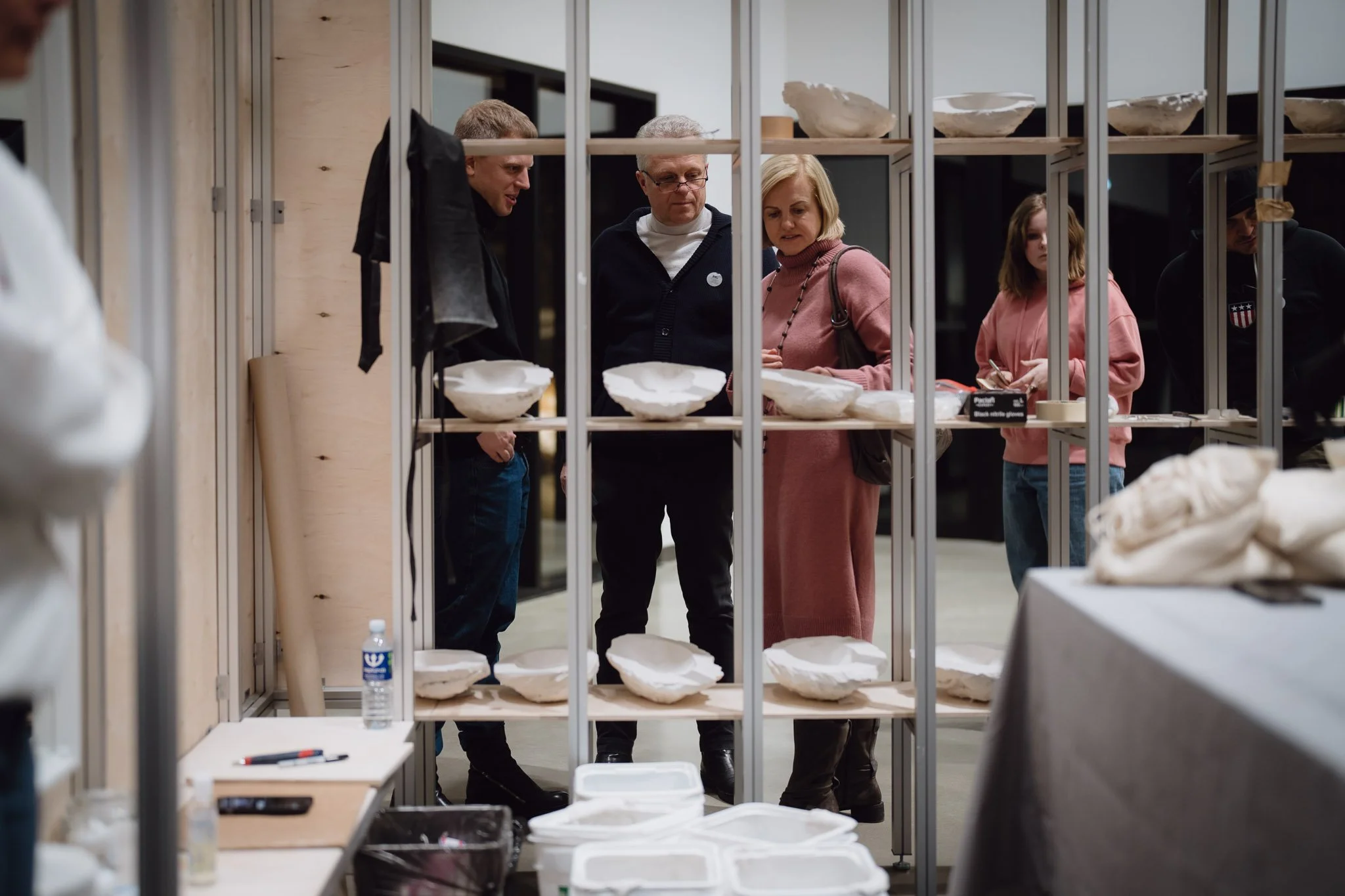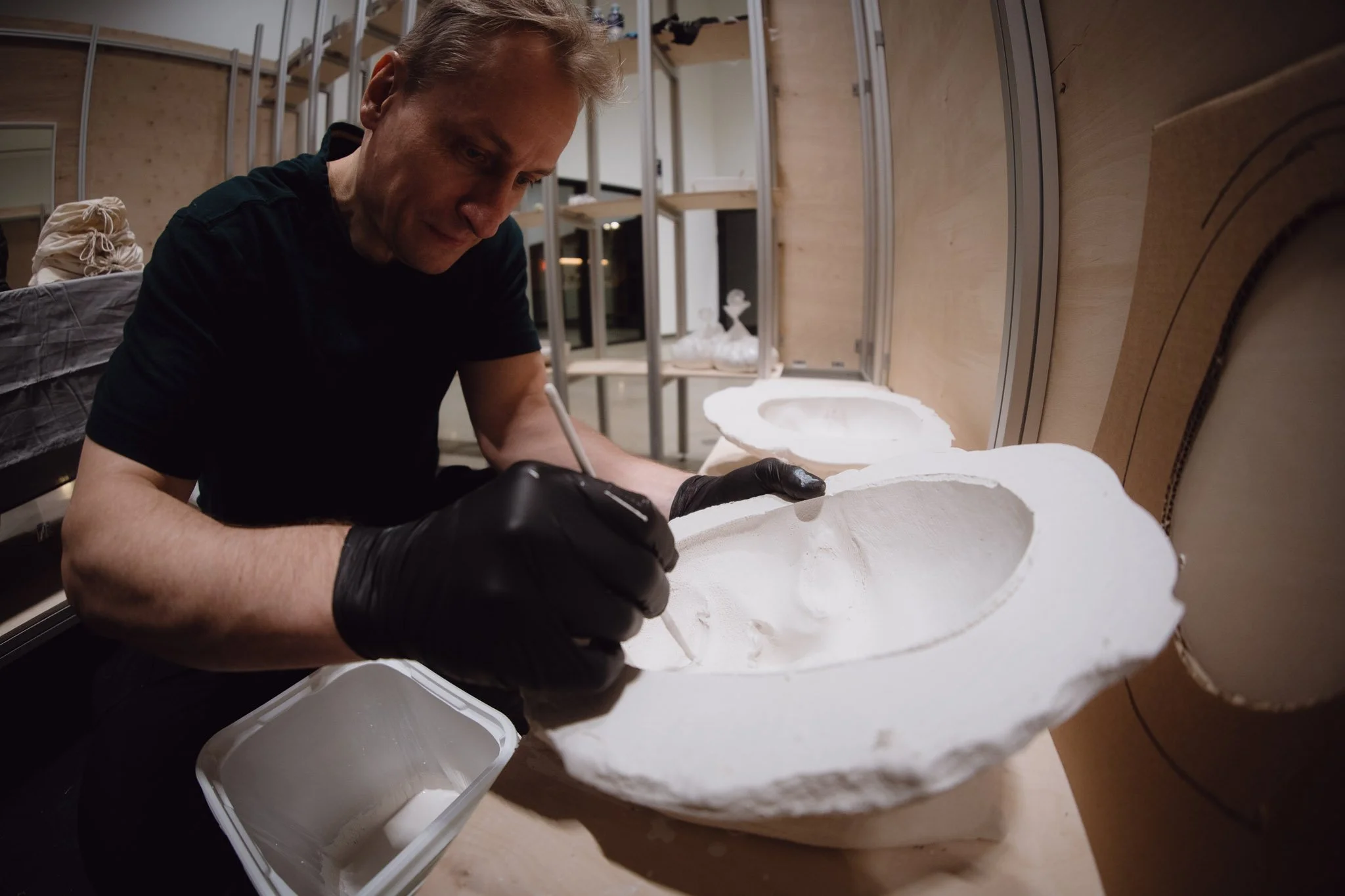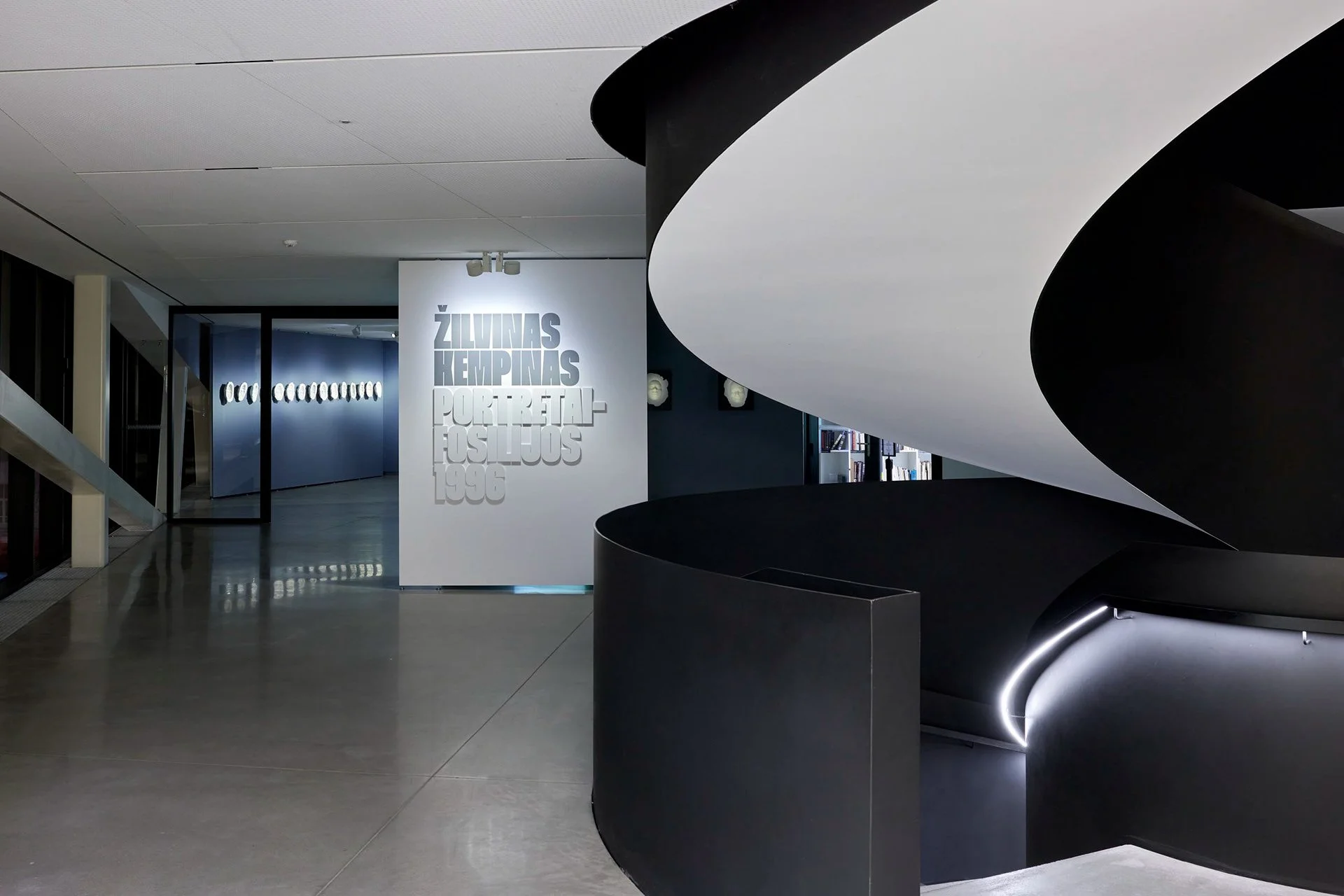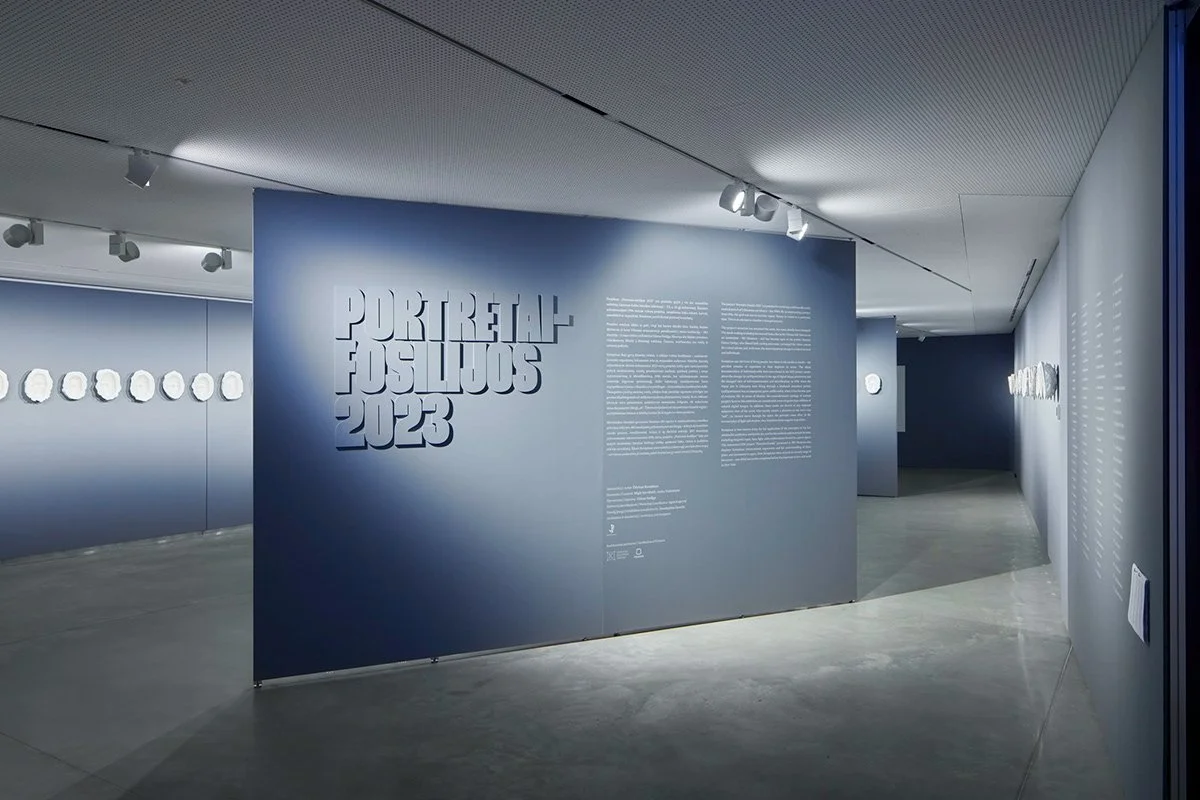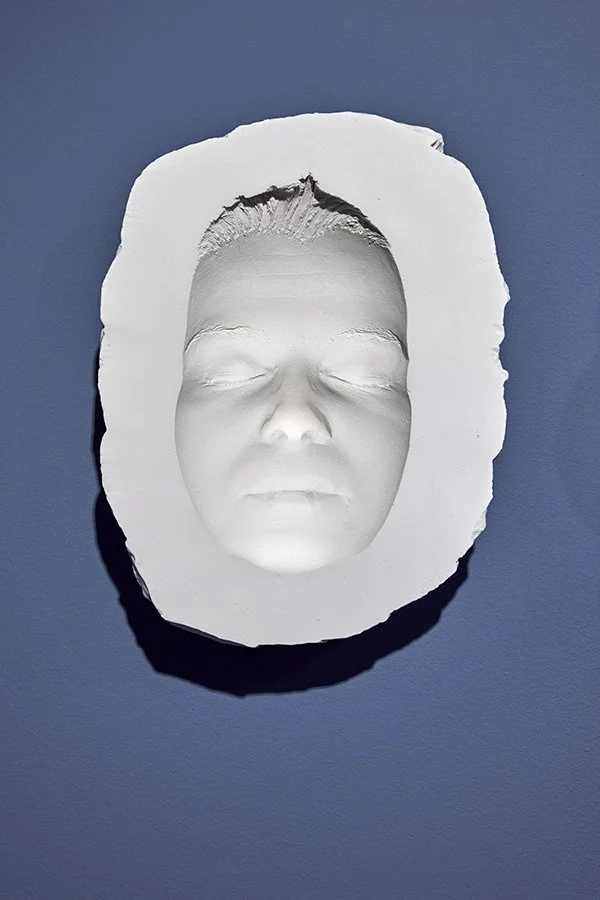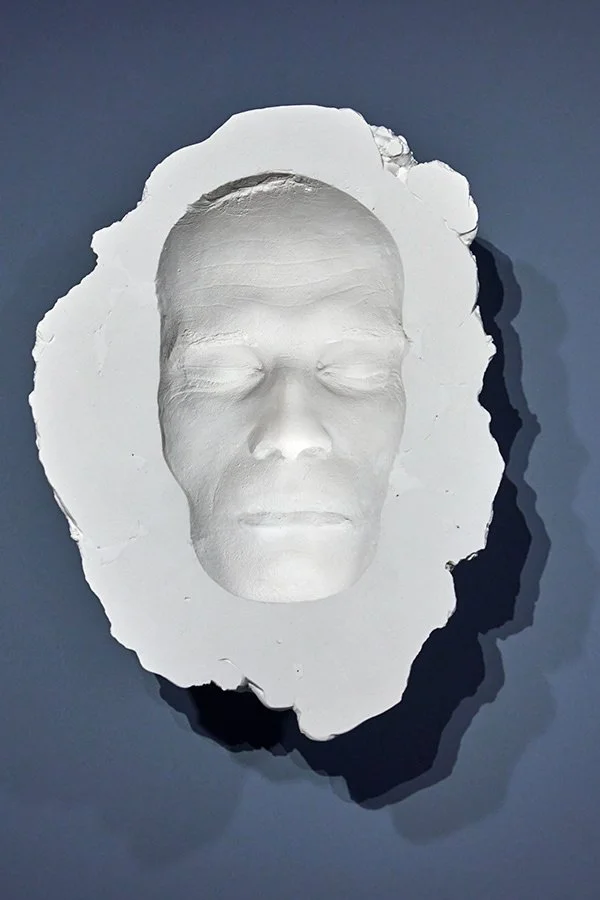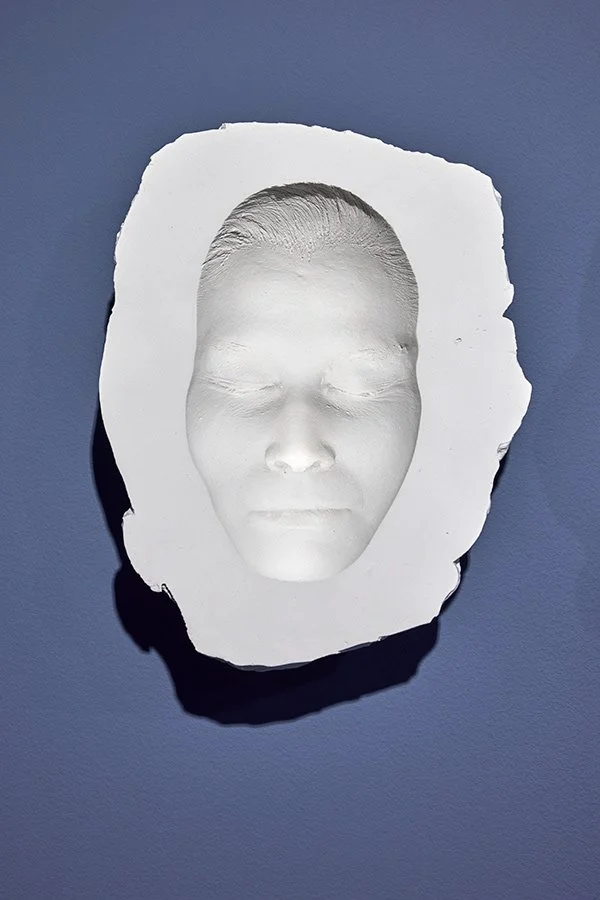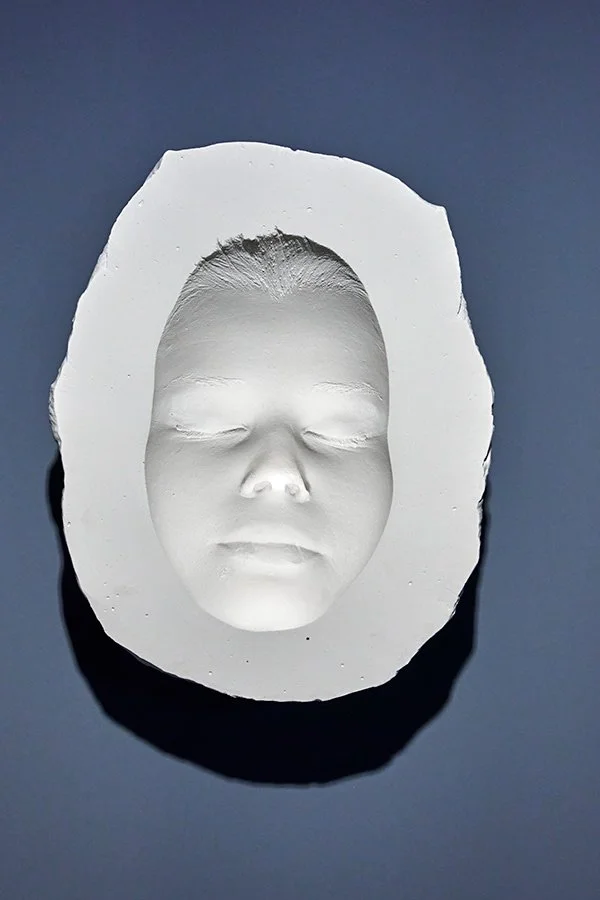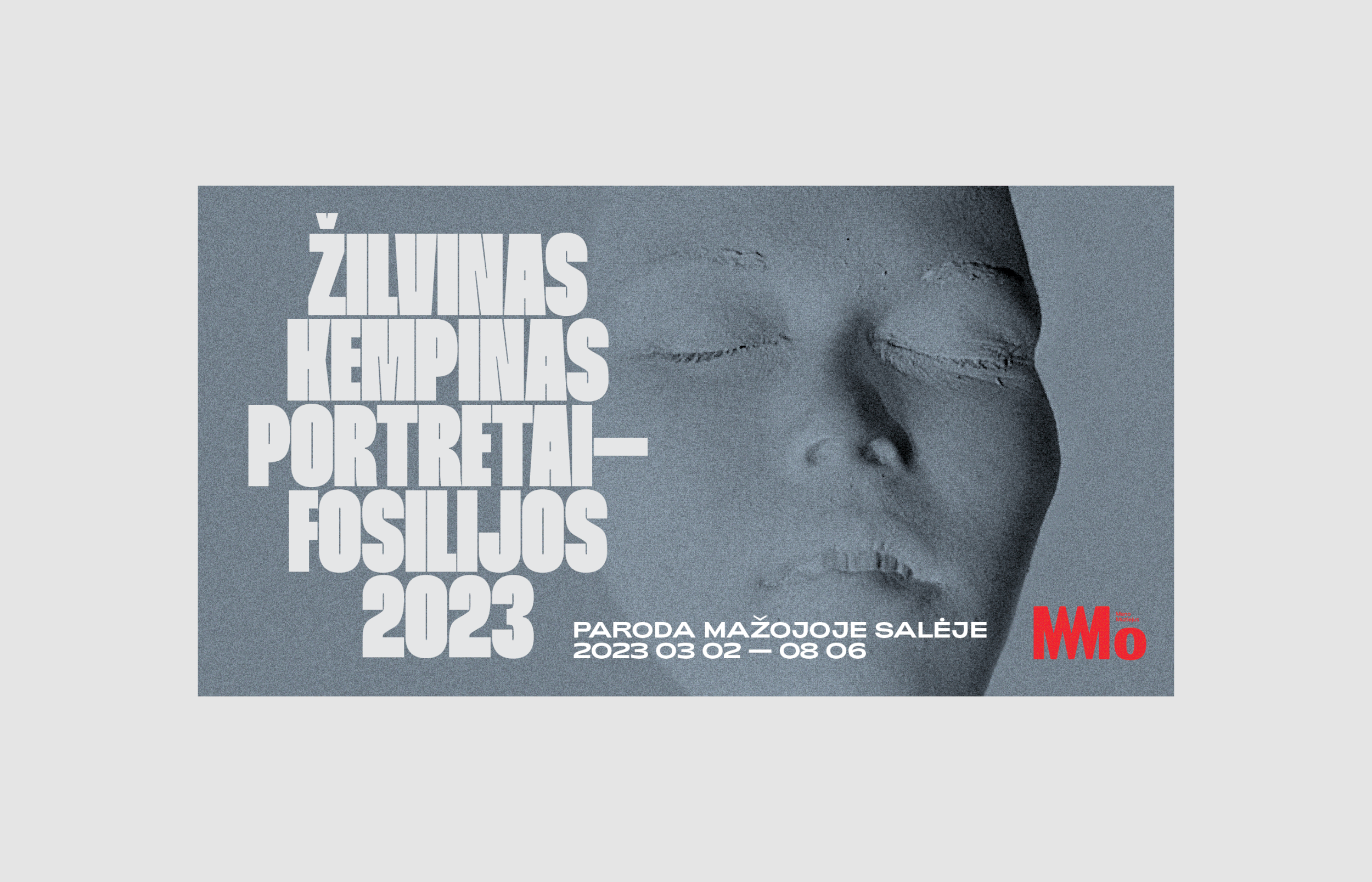
Exhibition design for “Portraits-Fossils 2023” by Žilvinas Kempinas
ABOUT THE ARTIST AND HIS PROJECT
Žilvinas Kempinas is an internationally acclaimed contemporary Lithuanian artist living and working in New York since 1997.
In August 1996, Kempinas organized a plaster mask-making workshop in Vilnius and held an exhibition titled Portraits-Fossils at Jutempus, an artist-run gallery. Portraits-Fossils are three-dimensional negative imprints of the face – a hybrid of the portraiture genre and death masks. However, Kempinas was interested in the very process of casting, in the project’s performative, social, and psychological aspects, providing an unusual experience for his friends in the artistic community, many of whom today are renowned Lithuanian painters, directors, sculptors, actors, and composers. Only a few masks were remained until now. Fortunately, the casting process was recorded on video by film director Gintas Smilga.
After 27 years, the mask workshop has been revived and new casts have been exhibited at MO Museum along with original and new video documentation by Gintas Smilga.
In the context of today’s endless flow of digital imagery and widely embraced culture of selfies, traditional silent plaster masks and the tactile process of making them reveals a shift in the times – historic as well as personal.
OUR TASK
In collaboration with MO museum, we had a great opportunity to create the concept, architecture and design for the temporary workshop area, exposition hall as well as its key visual communication.
EXHIBITION TEAM
Artist – Žilvinas Kempinas
Curators: Miglė Survilaitė, Aušra Trakšelytė
Cameraman – Gintas Smilga
Plaster mask-making workshop coordinator – Agnė Kuprytė
Architects and Designers – DADADA studio
Exhibition installation – Dominykas Šavelis
Photocredits - Aistė Kirsnytė, Rytis Šeškaitis, Norbert Tukaj, Vadim Šamkov
Workshop space
The first step was to create a functional and monumental space for a plaster mask-making workshop. The mask making process requires particular concentration of the artist, therefore, the space had to be relatively private, yet open for spectators who had a chance of observing the creative work.
Since the duration of the workshop was only a month, we have decided to use simple raw materials such as plywood which was combined with other items that the museum has provided us to re-use. That helped to make the space friendly for creative mess throughout the process. Also, we managed to achieve a visual effect portraying temporality of the workshop. A spectator also had a chance to observe a growing collection of the masks that have just been created and later landed in an exhibition space.
Exhibition space
The space was fully dedicated to the new collection of the face masks that have been produced during the workshop month.
The concept of the room is minimal - all the attention is devoted to the collection of the mask portraits. Special lights and fossil-portraits themselves, that appear to be sleeping, create a special ambience of the space.
3D signage mimicking the positive-negative illusion of the masks.
Communication materials
A graphic execution of the communication about the up-comming exhibition was a silent invitation to attend it and analyse the questions of change, behaviour and future.

